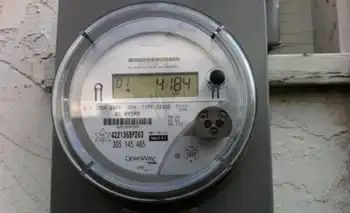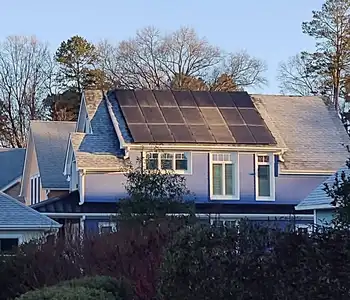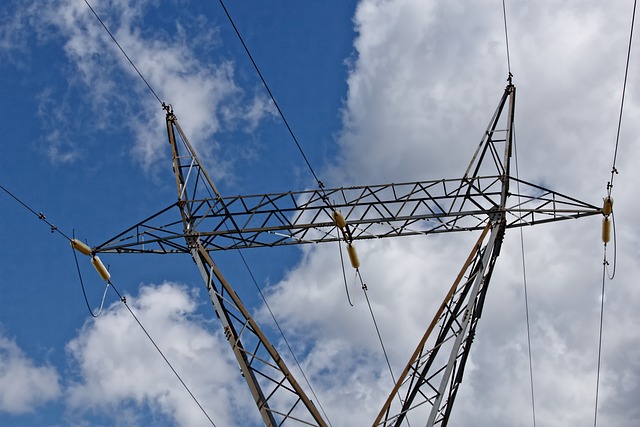Creating a revolution in the air
The head of the Canadian Wind Energy Association, Mr. Hornung says he doesn't see why Canada can't follow in the footsteps of European countries that generate a substantial slice of their electricity from wind: 20 per cent in Denmark, 13 per cent in Spain, and just under 10 per cent in Germany.
Mr. Hornung wants Canada to set a national target of having 20 per cent of its electricity from wind power by 2025, or about the same amount now generated from nuclear plants.
"It's not a goal that's unrealistic, at least from the perspective of what other jurisdictions are thinking about," he says.
It may not be unrealistic, but it's a definite stretch from where Canada is now. Despite having a huge land mass and some of the world's best sites for turning the energy in wind into electricity - particularly along the Atlantic, Pacific and Great Lakes coastlines and on the Prairies - Canada has been a laggard when it comes to installing wind turbines. Last year, it reached a relatively modest milestone, as wind power met 1 per cent of the country's electricity demand for the first time.
But despite wind's minute contribution to Canada's energy mix, it may be poised for a breakthrough.
One sign that a dramatic expansion could be in the offing is that whenever provinces put out tenders for new wind farms, they're swamped by offers to build them.
Manitoba Hydro's recent request for wind energy elicited more than 80 offers. In total, companies were willing to build 30 times more wind-generating capacity than the province was seeking. The province selected a 300-megawatt wind farm, to be the largest in the country when it begins operating in southern Manitoba in 2011.
The Canadian Wind Energy Association says it expects every province will be receiving some of its electricity from wind by the end of 2009, as British Columbia, New Brunswick and Newfoundland bring sites on line.
One reason wind's moment may have come is environmental, because it's an electricity source that doesn't release large amounts of greenhouse gases.
Wind farms, if used to offset fossil fuels, offer huge long-term emission reductions. The new Manitoba wind farm, for instance, would displace 800,000 tonnes of greenhouse gases annually, or the amount from 145,000 cars, compared with producing the same electricity from coal.
Wind is also an ideal electricity source for a country such as Canada with many hydroelectric dams.
The reason: Wind is highly variable, creating the need for backup power sources flexible enough to be turned on and off as needed to meet demand. It's hard to ramp up and down a nuclear reactor or a coal-fired plant, but far easier to change the rate at which electricity is made at a dam.
"Wind is a variable source and you need to partner it with other technologies," Mr. Hornung says. "Hydro is probably the best partner because hydro can be most easily manipulated to manage the variability of wind."
The two power sources also complement each other because wind output is greatest in winter, when wind speeds are faster in Canada, and the air - because it is cold - is most dense, allowing turbines to wring out extra watts. This wintertime gain is a benefit for a utility with hydro capacity because reservoirs are at their seasonal ebb due to low river flows.
Utilities could use wind power to meet more of their winter power needs, allowing reservoirs to build up capacity for summer, when electricity prices and demand are highest, according to Mr. Hornung.
Countries without hydro dams deal with wind's variability by being connected to a large grid. Denmark, for instance, is linked to transmission lines that can take its wind power surplus if needed. When gusts die down, there is enough generating capacity elsewhere in Europe to provide electricity from other sources.
Despite wind's obvious greenhouse-emission benefits, the power source isn't completely free of environmental controversy.
Many influential national environmental groups, such as the David Suzuki Foundation, are vocal supporters. Yet community groups often object to wind turbines, worried about such issues as risks for birds and bats. Many opponents also object to the aesthetics of the massive turbines, with their blades the length of jet wings and towers the height of office buildings.
The Lake Ontario Waterkeeper filed an objection last year with the Ontario Ministry of the Environment over the location of a wind turbine project on Wolfe Island, an important birding site, near Kingston. The group, a conservation watchdog, asked the province to conduct a full environmental assessment, based on fears that some of the 86 towers in the project might damage migratory bird habitat. The government rejected the request.
Mark Mattson, head of the group, says Ontario has never ordered a full environmental hearing to evaluate the pros and cons of a wind-power project, even though many of them are of such a scale that they amount to major industrial facilities worth hundreds of millions of dollars.
Such a review would also look at the economics of wind power, whether there are better ways of producing the electricity, and whether residents near towers should be compensated. Mr. Mattson says people living near dumps are sometimes compensated for lost property values and other problems associated with landfills, an approach he thinks should be considered for wind-power projects.
"Whether or not windmills have those impacts," he says, "that will be determined as soon as the government has the courage to have a hearing and have these things resolved."
Related News

35 arrested in India for stealing electricity
MUMBAI - In a raid conducted at Antop Hill in Wadala on Saturday, a total of 35 people were nabbed by the vigilance department for stealing electricity to the tune of Rs 72 lakh.
It was the second such raid conducted in the past one week, where operators have been nabbed.The cash-strapped BEST is now tightening it's grasp on `operators' who steal electricity from BEST sources and provide it to their own customers on a meagre monthly rent.
After receiving a tip-off about the theft of electricity in the Sangam Nagar area of Wadala, about 90 personnel of the BEST conducted a…





